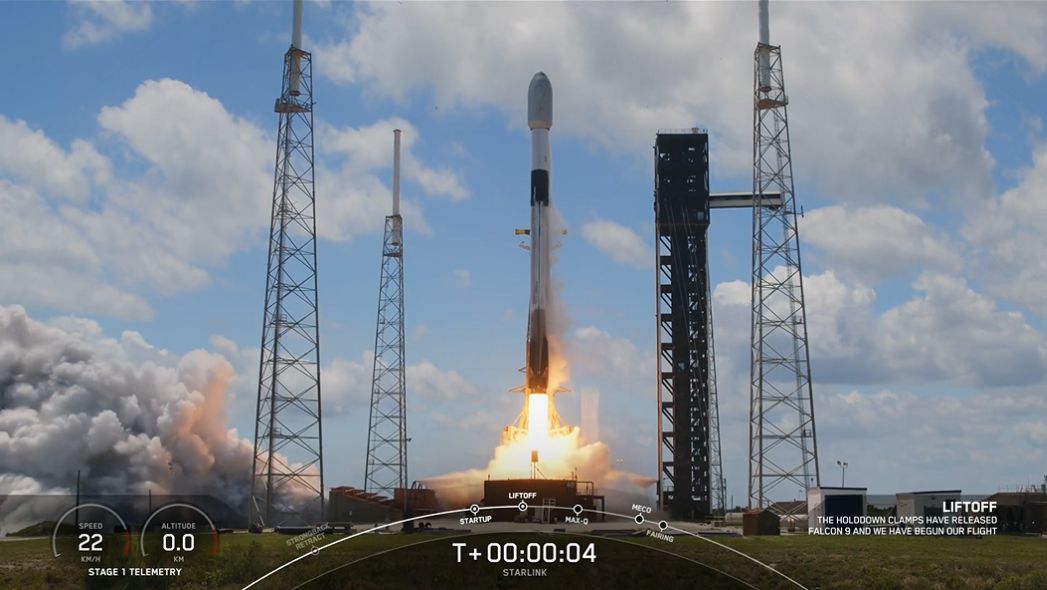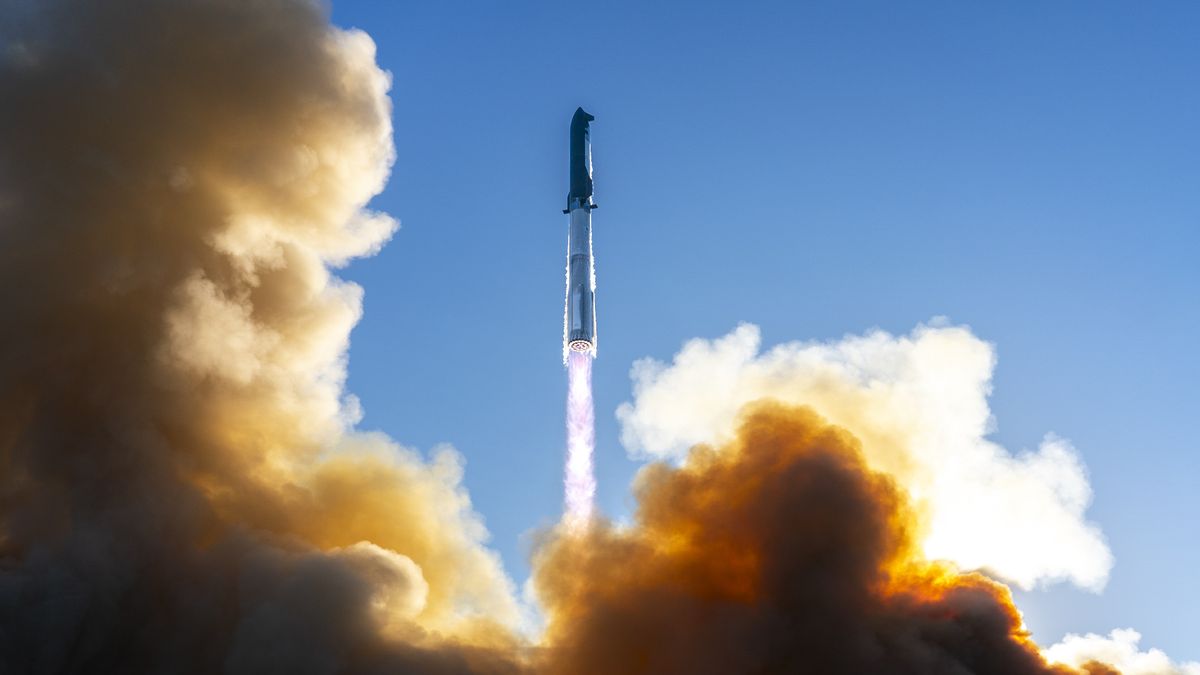ARTICLE AD BOX
 A record number of launches drove a 30% increase in launch industry revenue in 2024. Credit: SpaceX
A record number of launches drove a 30% increase in launch industry revenue in 2024. Credit: SpaceX
WASHINGTON — The satellite industry continued trends of modest growth in 2024 even as the number of satellites increases rapidly.
The Satellite Industry Association (SIA) released its annual State of the Satellite Industry report May 13 that showed that global satellite industry revenues reached $293 billion in 2024, a 3% increase from 2023. That roughly kept pace with inflation.
Most of the sectors of the industry tracked in the long-running report, prepared for SIA by BryceTech, showed significant increases in 2024. Revenue from satellite manufacturing grew 17% from 2023 to $20 billion, driven by high-value government missions, said Tom Stroup, president of SIA, at an event to roll out the report.
Launch revenue grew by 30% to $9.3 billion because of the record number of orbital launches. Ground equipment revenues grew 3% to $155.3 billion thanks to network equipment as well as satellite navigation equipment and chipsets.
However, satellite services revenue fell 2% to $108.3 billion in 2024. That was driven by continued declines in consumer video, part of larger trends beyond the satellite industry as people shift from linear television to streaming services.
Satellite television revenues have fallen nearly 20% since 2021, from $88.9 billion to $72.4 billion. “It’s gradual,” Stroup said of the falling video revenues. “It’s not falling off a cliff by any means.”
Other satellite services, while much smaller in revenue, are showing increases. Satellite broadband revenues grew nearly 30% in 2024 to $6.2 billion, while “managed services,” which includes maritime and aviation connectivity, grew 23% to $9 billion.
Space hockey stick
The modest revenue growth contrasted with the number of satellites themselves. There were more than 11,500 operational satellites as of the end of 2024, the SIA report noted, more than triple the number from 2020 and 8.4 times the number in 2015, driven by the rise of large constellations, especially SpaceX’s Starlink.
Jay Schwarz, chief of the Federal Communications Commission’s Space Bureau, dubbed a graphical representation of that growth the “space hockey stick” in remarks at the rollout event. “When we look at the space hockey stick at the FCC, we actually see a lot of opportunity,” he said, citing satellite broadband and Internet of Things services as well as emerging direct-to-device capabilities.
“More broadly, we see opportunity for U.S. space leadership,” he continued. The United States accounted for 37% of the overall $293 billion in satellite industry revenues in 2024, but the U.S. portion grew by 12% from 2023, while the rest of the world declined by 2%.
As in other speeches, Schwarz, named chief of the Space Bureau in February, advocated for both regulatory changes as well as streamlined processes to support the space industry in the United States.
“How do we align our regulatory processes with essentially that space hockey stick that we are facing?” he said. “We need to figure out how to eliminate slow, resource-intensive, bespoke review processes and try to standardize the licensing process as much as possible.”
He said the FCC has made progress in reducing the backlog of license applications, with a 14% reduction in satellite application backlog and 36% reduction in earth station application backlog since Jan. 20.
“This is putting points on the board” in longer-term efforts at reform, he said. “At the FCC, we have our foot on the gas.”
Jeff Foust writes about space policy, commercial space, and related topics for SpaceNews. He earned a Ph.D. in planetary sciences from the Massachusetts Institute of Technology and a bachelor’s degree with honors in geophysics and planetary science... More by Jeff Foust

 6 hours ago
1
6 hours ago
1









 English (US) ·
English (US) ·